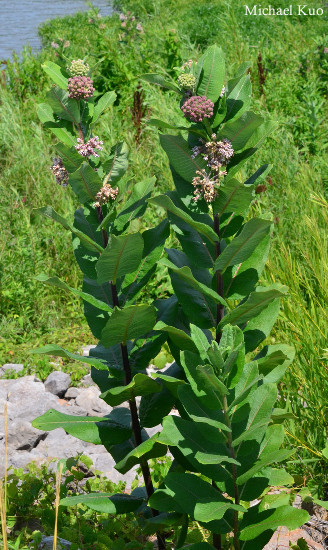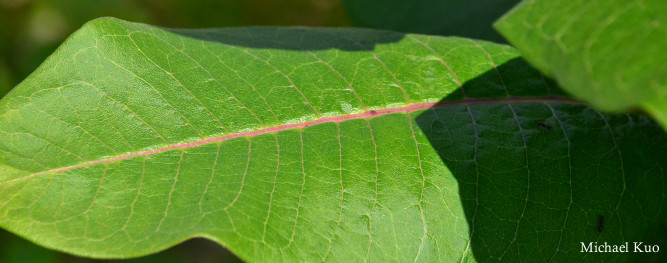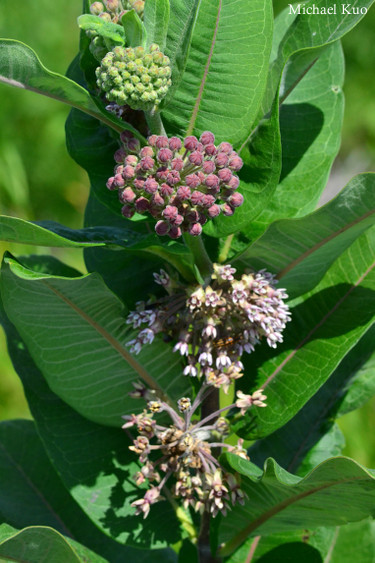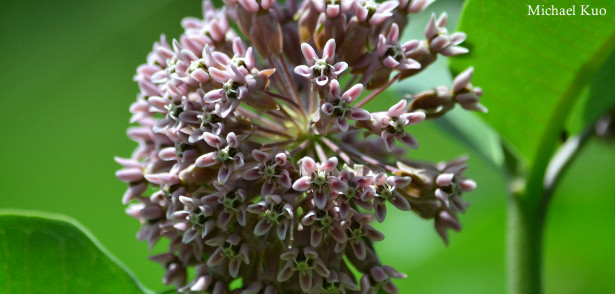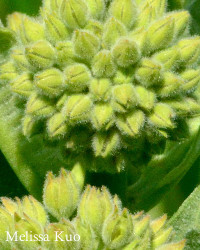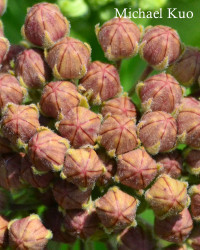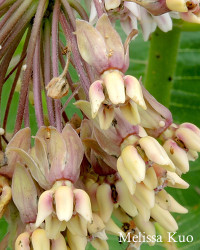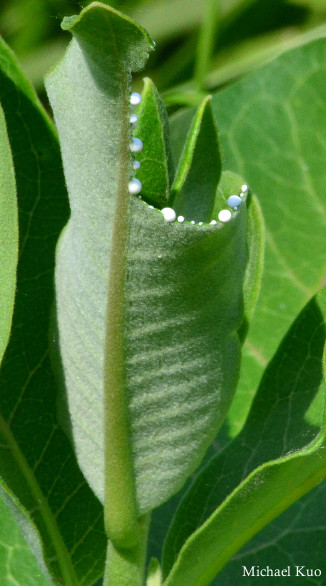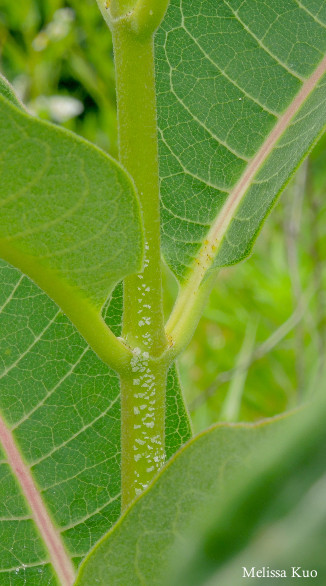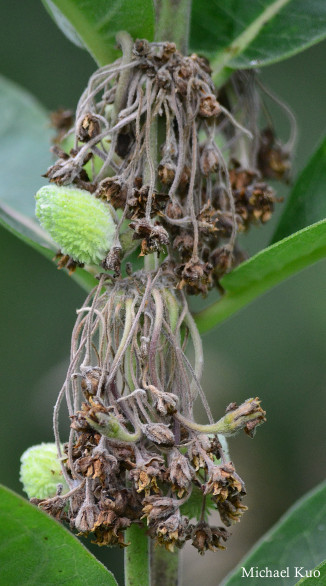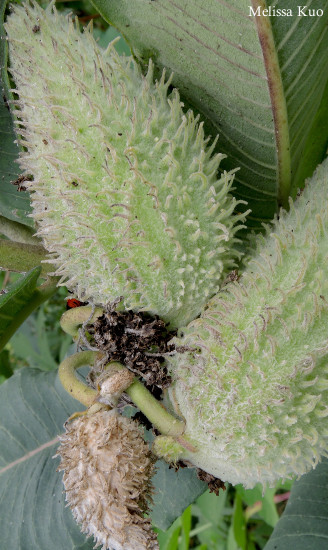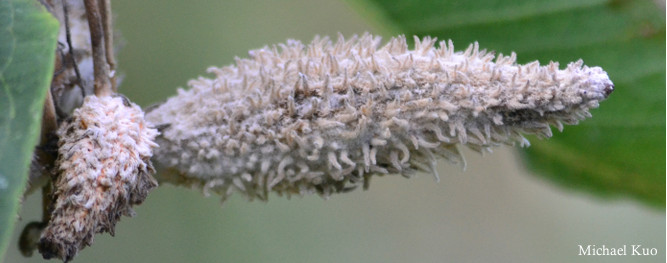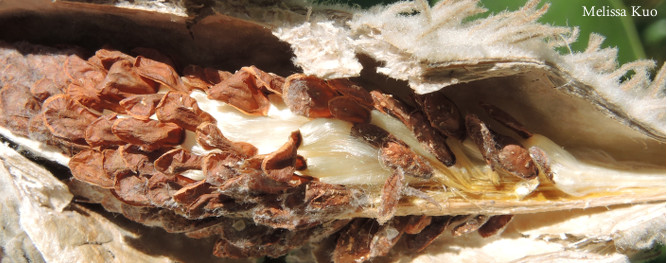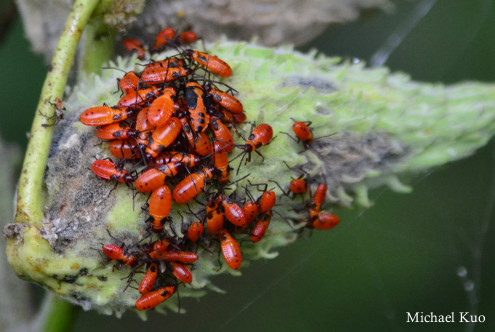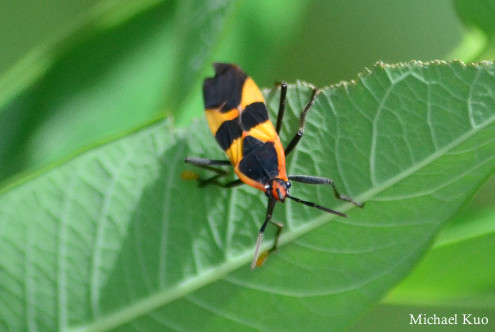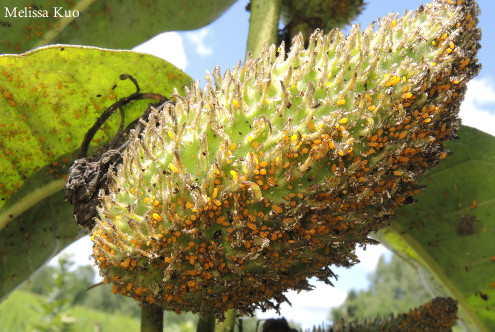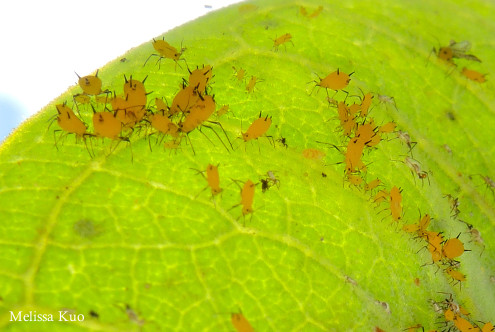 Asclepias syriaca (common milkweed) |
 central vein on a common milkweed leaf |
|
|
|
|
|
|
|
|
|
|
|
|
|
|
|
|
|
|
|
Oncopeltus fasciatus (large milkweed bug) The large milkweed bug (that's its common name, "large milkweed bug") lives on Asclepias syriaca and other milkweeds, eating the seeds and laying its eggs on the seedpods. Adults are orange with black markings, and are about 1–1.5 cm long. The similar small milkweed bug (Lygaeus kalmii) is more red, and features a red X pattern on its back. Oncopeltus fasciatus nymphs are orange-red with developing black markings and appendages. |
|
|
|
|
Tetraopes tetrophthalmus (red milkweed beetle) Red milkweed beetles are usually about a centimeter long, and feature red bodies with black spots; there are four black dots on the pronotum (the middle section covering the thorax). The appendages are dark gray to black, as are the antennae. Tetraopes tetrophthalmus is almost exclusively associated with Asclepias syriaca, although it is sometimes reported on other milkweeds and on dogbane. |
|
|
|
Euchaetes egle (milkweed tiger moth) The milkweed tiger moth, also known as the milkweed tussock moth, is a medium-sized, boring, grayish brown moth—but its caterpillar, which lives on Asclepias syriaca and other milkweeds, is pretty stunning: it features orange, white, and black tufts of hairs. |
|
|
|
Aphis nerii (oleander aphid) Oleander aphids are not exclusive to milkweeds (in fact they're named for their frequent association with oleander), but they are often found on milkweeds—and when they're there, look out! They can cover virtually an entire plant. They are about 2 mm long, and feature orangish yellow, bloated-looking bodies with black appendages. |
|
|
|
|
References: GN Jones 1971, Wilkinson & Jaques 1972, Bland & Jaques 1978, Arnett et al. 1980, Milne & Milne 1980, Kricher & Morrison 1988, RL Jones 2005, Voss & Reznicek 2012, Kurz 2014, Mohlenbrock 2014, Hilty 2017, ISU 2017, Lotts & Naberhaus 2017, USDA 2017, Zaya et al. 2017. Kuo, Michael & Melissa Kuo (September, 2017). Asclepias syriaca (common milkweed). Retrieved from the midwestnaturalist.com website: www.midwestnaturalist.com/asclepias_syriaca.html All text and images © , midwestnaturalist.com. |

